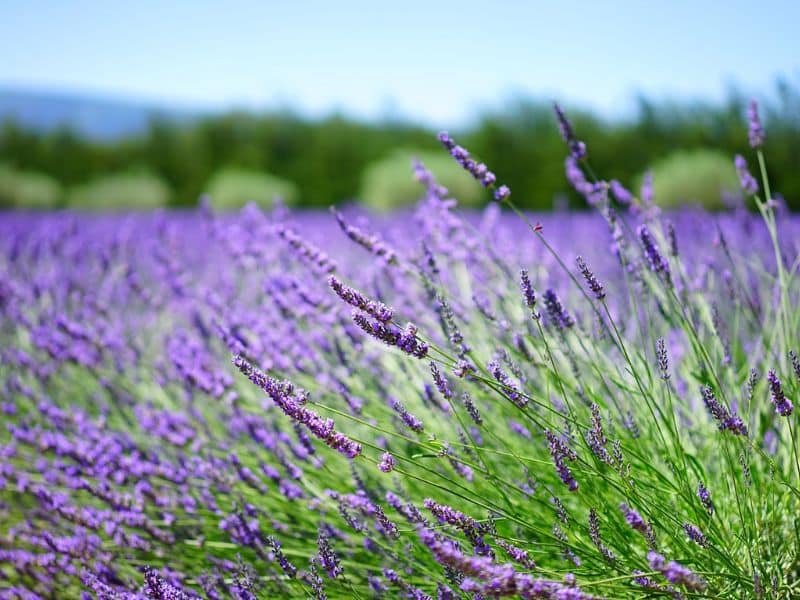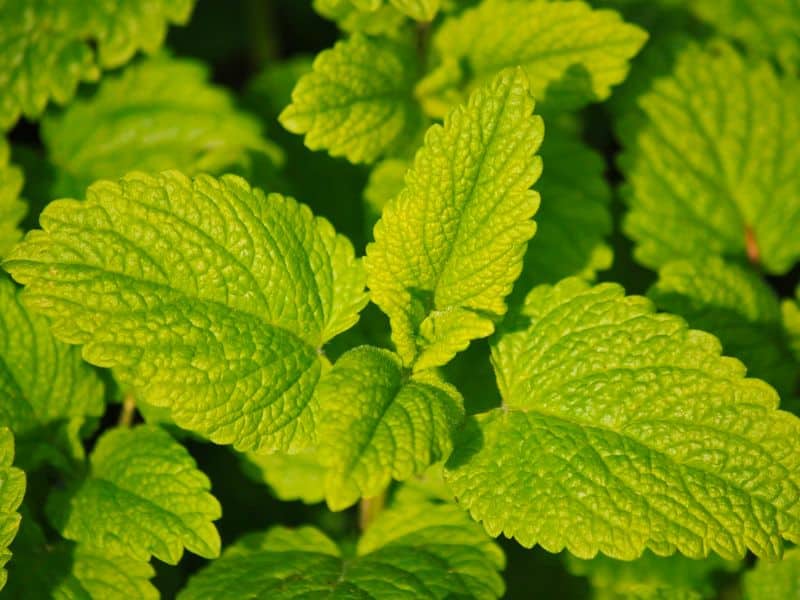Ever been in the midst of a peaceful summer evening only to be disrupted by the relentless buzzing of gnats? You’re not alone. These tiny pests can be a nuisance, but what if you could turn your garden into a natural gnat repellent sanctuary?
As it turns out, there’s a green solution to your gnat problem. Certain plants are known for their gnat repelling properties, and they could be your new garden essentials.
So prepare to roll up your sleeves, dig into the dirt, and transform your outdoor space into a gnat-free zone. Let’s explore the world of plants that repel gnats.
Identify the Types of Gnats
Before you start turning your garden into a gnat-free sanctuary, it’s crucial to distinguish between the common types of gnats you may well encounter. Let’s dive into the specifics.
Fungus Gnats
Usually spotted hovering around indoor plants, fungus gnats are tiny and black. They are drawn to moist, decaying organic material where they lay their eggs. While adults are simply annoying, their larvae can harm your plants by eating the roots.
Notice an unhealthy, wilting plant? That’s a sign you may well be dealing with fungus gnats.
Fruit Flies
Don’t be fooled by their name, fruit flies are a type of gnat too! These are more rounded in shape, with a distinctive tan color. Fruit flies, as you may well guess, are hugely attracted to ripe, fermenting fruits. However, they don’t stop there.
They also love sugary substances and discarded food items. It’s important to remember that if you’re trying to repel gnats, addressing fruit flies should be on your list too.
Common Characteristics of Gnat Repelling Plants
Let’s explore the key characteristics found in plants that effectively shoo away gnats. These traits are typically tied to their aromatic properties and the natural oils they contain.
Aromatic Properties
One commonality across gnat repelling plants is a strong, distinct aroma. Pleasant to us but gnats think otherwise. These scents overpower and confuse insects, inhibiting their senses and stopping them from laying eggs near your plants.
Examples include Rosemary and Basil, both of which release a potent fragrance gnats find unbearable.
Natural Oils and Compounds
Another shared characteristic of gnat-repelling plants is their rich content of natural oils and compounds. In a way, this makes them the guardians of your garden.
These compounds, like citronella in Lemongrass or pyrethrins in Chrysanthemums, are natural insecticides. They disturb the lifecycle of gnats, thwarting their ability to reproduce and eventually warding them off entirely.
Top Plants That Repel Gnats
Building on aromatic plants’ power, let’s dive into the best ones that can help transform your garden into a peaceful, gnat-free sanctuary.
Basil

Basil isn’t just a pretty face in your herb garden. It’s a robust warrior against gnats, especially the pesky fungus variety. The potent smell of basil obscures the enticing fragrance of other plants, confusing and repelling gnats.
Plus, it’s a bonus that you can use fresh basil in your pastas and salads!
Lavender

Lavender, known for its calming properties in humans, evokes the opposite effect on gnats. The rich concentration of natural oils in lavender, coupled with its strong scent, turns your garden into a no-fly zone for gnats.
Not to mention, the vibrant purple flowers will add a splash of color to your garden.
Lemon Balm

Lemon Balm, another weapon against gnats, packs a punch with its lemony scent combined with a touch of mint. It is one of nature’s most profound statements to those little gnats, declaring clearly, “You’re not welcome here.” A few of these in your garden, and you’ll send these invaders packing!
How to Use These Plants Effectively
Now that you’ve got knowledge about gnat-repelling plants, let’s delve into how you can strategically use these power-packed greens to shield your spaces against these winged adversaries.
Indoor Placement Strategies
When dealing with gnats indoors, correctly positioning your repellent plants can be a game-changer. First, identify spots where gnats are most active, such as windowsills or near trash bins.
Planting strong-scented greens like basil or lavender in these zones will deter the pests from making themselves at home. To add an extra layer of gnat-defense, extend your green sanctuary indoors by setting aromatic plants in places like your kitchen and living room. Keeping these on windowsills or tabletops would confuse wanderlust gnats, leading them astray from your living area.
Finally, give your repellent plants enough sunlight and water to keep their natural insecticide properties flourishing.
Outdoor Planting Tips
For gnats being a nuisance outdoors, strategic placement of repellent plants can be even more critical. Start by planting prolific bug-banishers like lemon balm and peppermint around the borders of your garden or patio.
Not only do these plants release strong scents to confuse and repel gnats, they also create a beautiful, fragrant environment for you to enjoy.
To step up your gnat guard, consider adding these plants to your grassy patches or porch pots. Just remember, regular care is pivotal to ensure these defensive plants are always ready to wage war against the gnats.
Additional Tips for Enhancing Gnat Repellency
You’ve already made the smart choice by introducing gnat-repelling plants into your space. Let’s go the extra mile and discuss additional ways to strengthen your defense against these pesky invaders.
Regular Plant Care
Maintaining your plants’ health plays a pivotal role in their ability to repel gnats. Wilting leaves or yellowed stalks won’t just affect the plant’s appearance — it can also reduce its natural insect-repelling capabilities.
- Keep an eye on Watering Schedules. Over or under watering can jeopardize your plant’s health. Here’s a simple tip: Check the soil’s top inch. If it’s dry, it’s time for watering.
- Embrace Pruning. Regular trimming not only helps control the plant size but also encourages new growth, thereby enhancing its gnat-repelling qualities.
- Ensure Proper Nutrition. Just like you, plants need balanced diets as well. Consider using organic compost as a natural and effective method of delivering essential nutrients.
Companion Planting Ideas
Whipping up a botanical cocktail never hurt! Mix and match your plants to create a powerful deterrent against gnats.
- Pair Basil with Tomato Plants. Basil’s strong scent masks the tomato plant’s aroma, deterring gnats from invading your yummy tomatoes.
- Rosemary and Sage make a great team. These aromatic species mix well and their combined scents ward off numerous pests, including gnats.
- Don’t isolate Lavender. Its pleasant scent coupled with other plants around your garden boundaries will create a fortress that’s unattractive to gnats.
Remember, diversity in your garden serves multiple purposes. By choosing the right plant partnerships, you’re not only enhancing gnat repellency but also promoting a healthy and diverse ecosystem in your green space.
DIY Plant-Based Gnat Repellent Recipes
Turn your favorite gnat-repelling plants into even more potent tools by delving into DIY repellent recipes.
Essential Oil Sprays
Harnessing the power of essential oils can lead to some of the most effective gnat repelling sprays. Create a mix by adding 10 to 15 drops of essential oil extracted from gnat-repelling plants like basil, lavender, or lemon balm to a cup of water.
Pour your blend into a spray bottle and there you have it – a handy makeshift gnat deterrent. Remember to spritz the solution around your living area and garden.
Also, the continuous whiffs of your favorite fragrant plants would be an added perk!
Herbal Sachets
Herbal sachets are tiny, fragrant packets perfect for warding off those pesky gnats. For these sachets, you’ll require dried herbs with gnat-repelling properties such as lavender, basil, and rosemary.
Fill small cloth bags with a mix of these dried herbs, tie them up, and place them strategically in different corners of your garden or living space. Not only will these sachets act as effective gnat repellents, but also keep your surroundings smelling heavenly.
Make no mistake, gnats will want to steer clear of your scented garden!
Up next:







